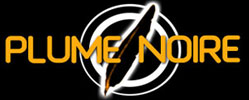
|
|
After the death of her niece under strange conditions, journalist Rachel Keller (Naomi Watts) decides to investigate and discovers that the girl died one week after watching a "cursed" video tape. When Rachel finds the tape, she can't help but watch it and receives a mysterious phone call telling her she only has 7 days left to live. She then tries to demystify the tape before the sinister expiration date. Based on Ringu, the adaptation of Koji Suzuki's famous novel that generated a sequel, a prequel and a series, The Ring is a psychological and daring film on the fringe of traditional horror cinema. By its unusual visual and cerebral dimension, it ranks with The Cell, somewhere between Arthouse—one thinks of Lynch, Buñuel, Maddin—and Horror, a genre based on worn tricks of the trade. The Ring and Images The film is built on imagery loaded with symbolism. While their meaning is elucidated as Rachel's investigation advances, they reveal however, with the second degree, indices beyond their simple significance. The tree on fire symbolizes the destruction of "roots", which in this case would be the family and the well is a source of life—or rebirth while the lighthouse is synonymous with loneliness. The profile of the man at the window refers to the troubling presence of a family member and obviously to Psycho while the bloody waves and suicide show the presence of a crime and of remorse. Rachel is like that fly on the eye of the camera. She brushes against the surface of the film while watching it but she is then directly involved in its images through the investigation and the curse weighing on her. One can see in the use of this fly the first allusion that calls into question the power of images on the spectator, as the insect is the physical representation of the connection between humans and the screen. But the most significant scene of the video is obviously the scene with the woman in front of a mirror. By looking at the camera through the mirror, she looks at the spectator who can foresee his own reflection. A self-reflective process to link to the purpose of the tape: to make the rest of the world relive this drama and suffering forever. One can see there not only the denunciation of the unhealthy voyeurism of a society subjugated to the misfortune of others but also the condemnation of the medium used: television and rating-crazy media involved in image manipulation. In the film, the curse feeds off the fear of those who watch the video. Just as in television, the news feeds itself with the fear of the audience by only showing misfortunes of the world (crimes, accidents, cataclysms): a theme that's also present in Bowling for Columbine. When the creature leaves the screen, empties its victims of their energy and dries them up, one can see the allusion to the stupefying and brainwashing effects of television on the masses. The Ring and Horror Cinema Finally a truly scary horror film that in addition doesn't inflict us with the usual "masked" clown pursuing teenagers in their underwear. The success of The Ring lies in its psychological construction of horror but also in the use of an "inoffensive" element present in each room: the television. The surprisingly sober and artistic direction from Gore Verbinski, better known for kid movies and the laborious The Mexican, manages to create a suffocating atmosphere in which the spectator is absorbed. The only true regret is the useless presence of a young boy who "sees dead people" a process used to the hilt since The Sixth Sense and that officiates here like a bad cliché. The film is also reminiscent of Videodrome. The success of a psychological film also lies in the talent of the cast. Choosing lesser-known actors allowed for more importance to be given to the plot, in this case, without harming it. Naomi Watts, who made an excellent choice to following David Lynch's masterpiece, perfectly carries the film on her shoulders, while the supporting cast was just as finely selected (in particular the always disturbing Brian Cox (Manhunter). The Ring and Cinema In another play of mirrors, The Ring also refers to cinema. When Rachel's ex sees the video for the first time, he says that it reminds him of a student film, an ironic reference to the experimental beginnings of many filmmakers. The picture also distances itself from slasher flicks for teenagers, since after the very traditional beginning with two girls alone in a house, one passes to the adult world and remains there. But it is especially when the movie ends, just like the tape, that the message is clear: the filmmaker has been manipulating us for almost two hours and has also fed on our fears.
|
|

